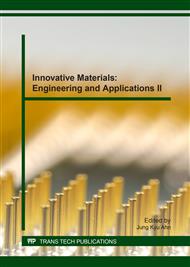p.418
p.423
p.429
p.435
p.440
p.445
p.452
p.457
p.463
Effect of Span-to-Depth Ratio on the Fracture Energy of Foam Concrete
Abstract:
The use of foam concrete as an alternative material in the construction industry has become popular in structure industries due to the low density range, good strength, high serviceability, and lightness of this material. Several studies have been conducted to determine the mechanical properties and strength of foam concrete. However, research on fracture energy is still ongoing. Therefore, these studies aim to experimentally investigate the effect of span-to-depth (S/W) ratio on the fracture energy of foam concrete using beam specimens with V-notches through a three-point bending test. Beam specimens were encased and prepared at a density of 1600 kg/m3. Moreover, three different S/W ratios (4, 5, and 6) with a notch height of 20 mm were adopted. Fracture energy was determined using the Hillerborg, Bazant, and Comite Euro-International du Beton models. From the experiment, results showed that S/W ratio affected fracture energy.
Info:
Periodical:
Pages:
440-444
Citation:
Online since:
February 2017
Price:
Сopyright:
© 2017 Trans Tech Publications Ltd. All Rights Reserved
Share:
Citation:


